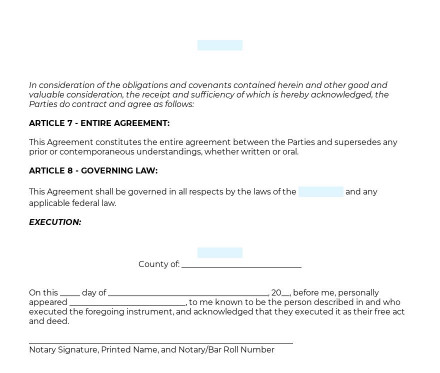
When one party needs to release another from liability, a Release Agreement can be used. In other words, this agreement (also known as a Release Form) is used after some incident that damaged one party has happened ant the injured party wishes to "release" the other party from liability in exchange for something.
Complete the wizard & download the document
When one party needs to release another from liability, a Release Agreement can be used. In other words, this agreement (also known as a Release Form) is used after some incident that damaged one party has happened ant the injured party wishes to "release" the other party from liability in exchange for something. This usually is money; however, it can be anything that has value for the injured party.
The first party to the contract is the Releasor - this is a party receiving the monetary payment or other valuable consideration. A second party to the contract is the Releasee- this is usually a party that is at fault and has to be released from liability.
A Release Agreement typically releases the Releasee from all legal liability for any claims relating to the incident.
Tip: How to modify the templateYou fill out a form. The document is created before your eyes as you respond to the questions.
At the end, you receive it in Word and PDF formats. You can modify it and reuse it.
This document, particularly, can be used in the situations below:
It is required to describe the details of the incident, debt, or activity that caused the release, along with the parties' identifying information.
A completed document should be printed and signed with a notary consent.
In the US, specific-state laws govern Release agreements. Mostly, general forms of these documents are similar across states.